Is Life in Jamaica an Affordable Retirement Option for Expats?
Ever since I began my journey down the rabbit trail into “real Jamaica,” I’ve had Jamaicans telling me that it’s SOOOO expensive to live here. Then I run into expats who tell me that they can easily afford to live here on pensions when compared to life “back home.” Among the “old timers,” both older Jamaicans and foreigners who made the transition many years ago, the cost of living seems to get mixed reviews. I am often asked, “Is life in Jamaica affordable,” so let’s look at actual prices of everyday household items.
 When I was visiting as a tourist, I felt like many aspects of life were very expensive.
When I was visiting as a tourist, I felt like many aspects of life were very expensive.
Consider, please, the taxi ride I took from our resort in Negril to the pharmacy “downtown” (about a 2 miles away) on our very first trip to Jamaica. The driver, arranged by the resort, my first mistake, charged us $20 US PER PERSON. Ha ha. What an idiot I was.
That same ride, had I hailed a local cab five steps from the front door, wouldn’t have cost us $5. I just didn’t know.
Most towns have established “route taxis.” These are drivers who are (mostly) licensed, insured and inspected. They choose two towns to drive between and spend the entire day going back and forth.
Their goal is to jam as many passengers as possible into each trip. Even if the car only has seats for five people, you can bet there will be seven body’s crammed in before he hits the road. Typical town-to-town fare is about $250 to $300 J ($1.90 to $2.30 US.) You can tell the licensed drivers by the red license plate on the car.
 Going out to eat in a tourist town can drain a wallet quickly, as well.
Going out to eat in a tourist town can drain a wallet quickly, as well.
Mixed drinks, typically in the $6 to $9 range, along with a nice meal, $12 to $30 per main dish, can leave a party of two with heavy bill, especially considering most people eat two or three times a day. Perhaps I’m just a cheapskate, but I can’t help but compare these meals to the cost of preparing them at home.
Of course, you can choose to drink at home or in your hotel room, purchasing fruit juices, rum, and soda at the store, but then you miss out on the culture that surrounds these local watering holes. I don’t generally drink alcohol, especially not when I’m traveling alone. My solution to enjoy the atmosphere has been to stop in and play dominos with the Jamaicans. I get all of the local “news” that way, too.
After that initial trip, I always booked a room with a refrigerator so I could go to the local fruit stands and supermarkets to purchase what we needed for snacks, drinks, etc.
I was often traveling with three or four teenagers, so cereal and sandwiches could help keep costs down. I also learned quickly to bring my own peanut butter. A staple in our home, the tiniest container here could easily go for $4 or $5 US.
While many things purchased in the stores in Jamaica are considerably less than those offered in the restaurants and tourist shops, many were still pricey. For example, a bottle of soda in the restaurants could be $2.50 or more, plus taxes and a service charge. In the tourist area grocery store, it might be $1.00. In the US, I pay about 35 cents. Yes, this same thing happens in other countries, but my point is that “eating out” is not often a cheap alternative here.
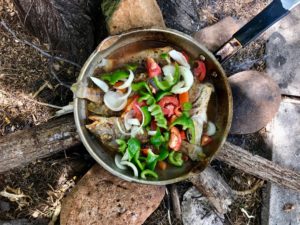 That said, a solo traveler, as I so often am, should try to find a truly Jamaican “cook shop.”
That said, a solo traveler, as I so often am, should try to find a truly Jamaican “cook shop.”
There, we can get a chicken dinner, complete with a generous portion of rice and peas and usually a side of vegetables or pasta salad (never understood the double portion of starch) for $500 J to $700 J (currently $3.83 to $5.35 US). Who is going to heat up the kitchen, clean up pots and pans, and do a bunch of shopping for less than $3.83? Not me…until I get sick of jerk chicken with rice and peas!
When it comes to the cost of living in a small town in Jamaica like Treasure Beach, I think the wisest thing I’ve been told is that it’s expensive if you “eat like an American.” Americans tend to have plates that are heavy on proteins. Meat, especially beef, is expensive and comes in cuts that we’ve typically never encountered.
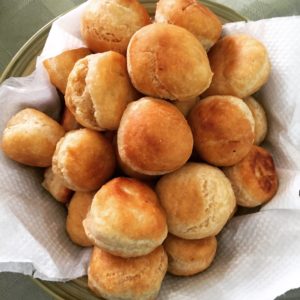 Old school Jamaican families tend to have plates that are heavy on starches.
Old school Jamaican families tend to have plates that are heavy on starches.
Rice, yam, pumpkin, bread fruit and even Irish potato are usually the dominant feature at meal time. Meat is not served in heavy portions. Dumplings, tomatoes, cucumbers and peppers round out the meal.
On my last trip to the “big city” of Black River (okay, its only two short streets wide) I picked up a few items. Now, don’t judge me. I’m not in my own home at the moment and am not doing a lot of cooking. But I saved my receipt so I could give you a few hard prices. (I’m going to convert them to current US exchange rates.)
Liquid hand soap, 16oz…$1.65
Horribly thin, useless paper towels…$.95 (Bounty was about $2.50/roll)
Wheat crackers, 4oz…$.54 (I like them with my peanut butter.)
Bumble bee white tuna in water, 3.5oz…$1.05
Diet Pepsi, 20oz…$.56 (Woohoo! At least my one vice is cheap here!)
Hunts chunky vegetable spaghetti sauce, 24oz…$2.26 (These are usually $.99 at home.)
Kraft grated Parmesan cheese, 3oz…$2.40
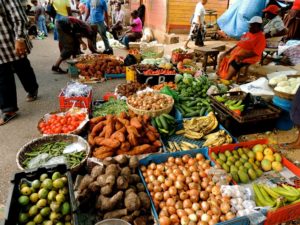 Hopefully, you’ll have a decent farmers market in or at least near the town you might settle in.
Hopefully, you’ll have a decent farmers market in or at least near the town you might settle in.
This can be an effective strategy to save money, and help to make life affordable in Jamaica if you are careful and shop around. For example; I was trying to purchase oranges and was quoted prices of $600 J for a dozen at the first few stands I approached. In the end, I found them for $400 J.
I usually try to go to the farmers whose spaces aren’t easily visible from the street. They tend to be most desperate to sell and give better pricing. Establishing a relationship with “your farmer” can go a long way towards getting better pricing and the best produce. Smiles and kindness are great social lubricants.
As far as groceries and domestic supplies go, it’s sort of hit or miss. Some things cost more than back home and others are less. Of course, virtually EVERYTHING is imported and so anything brand name is expensive. The big bottle of Tide detergent I pay $12 for at home is nearly $30 here. No, I don’t buy it. Windex or 409? Forget it. You’ll have to sell a kidney to afford it.
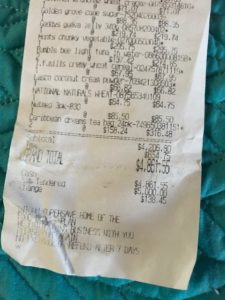 I have to admit that it’s taken me many years to stop laughing when I get my grocery bill.
I have to admit that it’s taken me many years to stop laughing when I get my grocery bill.
There’s something hysterical to the American mind about paying $4,000 to $6,000 for groceries. Of course, thats only about $30 to $45 US, but it cracked me up for a long time.
Something I’ve really struggled with in Jamaica is that even brand name items taste or perform differently here. I opened that can of Hunts spaghetti sauce last night and could barely choke it down. It tasted like metal.
The last time I bought a Snickers bar, desperate for a pick-me-up, it was so disappointing. It didn’t hit me as being old or stale. It seemed like a totally different recipe. The same thing is true for my beloved Diet Pepsi. It can border on the the flavor of pencil lead at times.
I’ve now noticed that some name brand products actually say “for export” on them. Aunt Jemima Syrup, Betty Crocker cake mixes, and many others have this export label. That should tell us something, eh? (I can tell I’ve been hanging out with a lot of Canadians because I often end my sentences with “eh?”)
If you are a processed food consumer, it will be very expensive to live here.
Cereal, lunch meats, cheeses, butter, yogurt and the like are astronomical. Doritos, Lays Potato Chips and Oreo cookies, if you can find any, are $5 to $6 for the same size bag that we might pay $2.50 to $3.25 in the States.
A loaf of bread is about $2.50 and a box of UHT milk is the same, although it was closer to $4 up in Negril. A 20oz bottle of water is about $.75 and a liter bottle is about $1.50. Butter was close to $6/pound the last time I bought any. I felt like I was spreading gold on my toast.
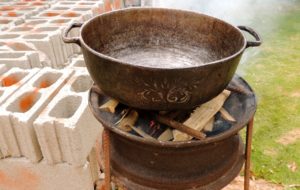 But enough about food. Let’s tackle the other necessities of life, like linens, table wear, pots and pans.
But enough about food. Let’s tackle the other necessities of life, like linens, table wear, pots and pans.
All of these items ARE available at affordable prices in the small town shops but they are usually imported from China and are very poorly made. I’m sure that a trip to Kingston or Montego Bay could render some better options, but it costs about $150 to hire a driver and make that trip. Is it worth it?
I’ve spent the last three years bringing down thick towels, high count bedsheets, a quality mattress pad, bedspreads, pillows and even curtains. Kitchenware like mixers, toasters, and coffee makers never seem to last for long if purchased here, so I’ve transported those, too.
My biggest investments have been in well made tools, a weed whacker, and items that were just small enough to pack in a suitcase, but pushed my weight allowances. (Note: if you choose to bring tools, lamps, TV’s or other larger items down, make CERTAIN to bring receipts with you.)
That $100 smoothie blender might be valued (and taxed) at $250 if you are forced to declare it and can’t prove how much you paid for it. Keep your “personal items” (pans, blenders, etc) UNDER $500 in value so you can get through customs unscathed.
Name brand shampoos, cosmetics and over the counter medicines are best purchased abroad.
The same goes for clothing, especially panties, shoes (even flip flops) and, most importantly, sunblock! Unless you like lycra, you’ll be out of luck for dresses. Footwear is usually plastic that kills feet and won’t last long. I’ve seen bottles of spray-on sunblock sell for nearly $24 dollars. What???
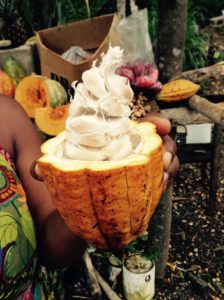 As for the items we all hope to enjoy in abundance while living in Jamaica, like melons, bananas, pineapples and mangos, you have to be street-wise.
As for the items we all hope to enjoy in abundance while living in Jamaica, like melons, bananas, pineapples and mangos, you have to be street-wise.
Pay attention to what the Jamaicans are paying and gently insist on the same pricing. I call out tricky sales people by smiling and saying, “What? Are you charging me tourist prices? Mi live er and mi nuh rich!” I present myself as joking around but I usually get the price lowered.
One thing that I love about living in a small town like Treasure Beach is that you could just about procure whatever you need without ever leaving your yard. Vans drive around town and stop at my gate with fruit, veggies, and, sometimes, fish. We have an egg man, a plastic container man and, recently, we’ve even had a plumbing supply man! Guys have come around selling clothing, bedding plants and a few times I’ve seen whicker furniture! I guess it’s necessary in a country where so few people own cars.
The bottom line is that everyone who asks themselves “Is life in Jamaica affordable?” has choices to make as well as different budgets.
We each have items we are willing to pay a premium for and other things that are easily pushed aside. The cost of food, clothing and entertainment can break the bank or be totally manageable. It all boils down to your priorities.
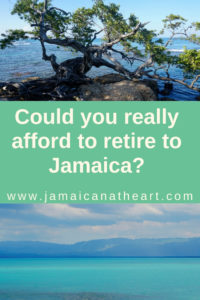 In future installments, I’ll go into detail about the cost of housing, land taxes, utilities and automobiles. In the mean time, you can read more about Expat Life in Jamaica here to find out more about my Jamaica experiences. Or perhaps you’d like to know more about fitting into Jamaican culture.
In future installments, I’ll go into detail about the cost of housing, land taxes, utilities and automobiles. In the mean time, you can read more about Expat Life in Jamaica here to find out more about my Jamaica experiences. Or perhaps you’d like to know more about fitting into Jamaican culture.
If you have questions or comments, please scroll and down and give us a shout.
If you enjoyed this post, please share it on Facebook, Pinterest, or Twitter by simply smacking the ole “share” buttons, found at the top and bottom of each post! Thanks so much for helping to spread the word!
10 Amazing Travel Tips Free!

Subscribe and we will send you a very helpful FREE list of things to do before you travel abroad. Trust me, I've made every travel mistake in the book. Let me save YOU some headaches!




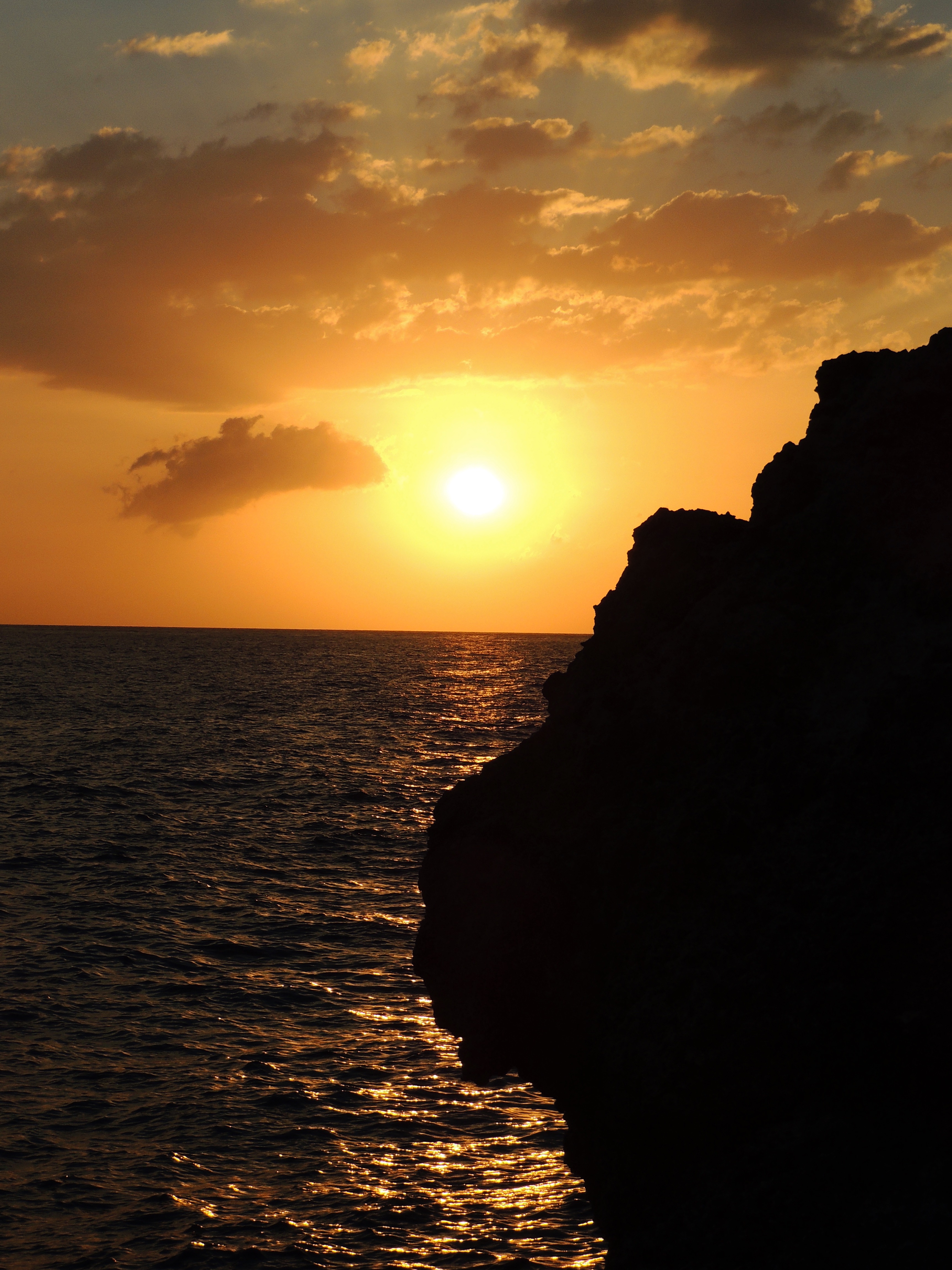
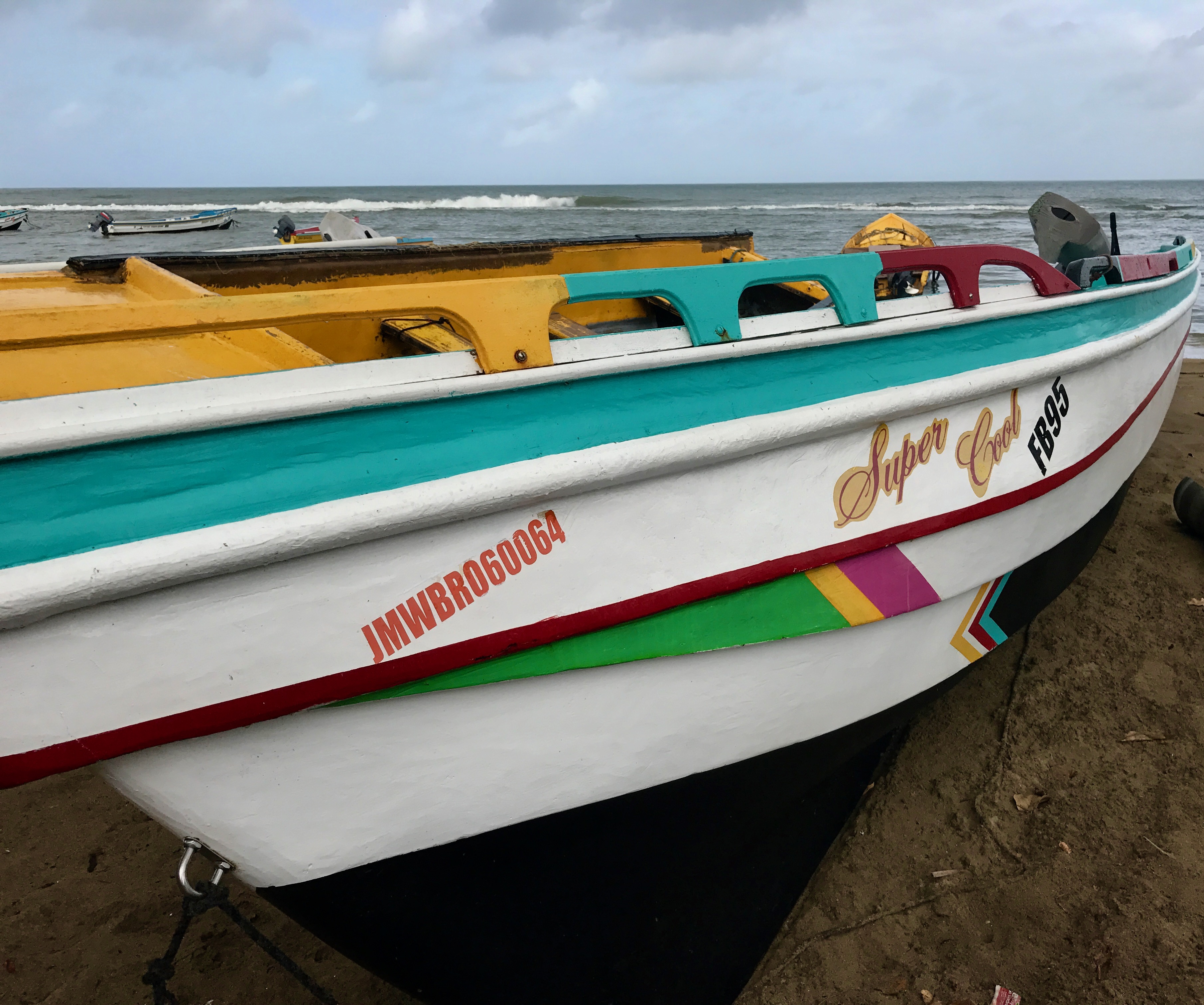
6 Comments
Sandra Raasch Simmons
Your information I find to be ‘right on’ with what I experience living here. The thing that does give me the extra to buy those high priced groceries is that rent is very reasonable. The news says that with Airbnb’s arrival on the scene there is becoming a shortage of long term rentals so those types of rentals are becoming hard to find and therefore the prices are rising. I just don’t ask for much from my landlord and sort of hope he forgets I’m here. Just one thing – living In Ocho Rios the grocery prices you mention are lower than here and that does surprise me since I assume the Treasure Beach and surrounding area seem to be a little higher class than here.
Jamerican
Most of the prices I listed were from Black River where it’s really a local market. But even in Treasure Beach, we don’t have the volume of people coming through for them to be able to jack up prices and still have enough people willing to pay it like they do up in Ocho Rios. For example, I noticed that one of the little cook shops in Treasure Beach went from $500 per meal to $700. Within a week, she dropped them back down. We have another place in town that still offers $300, $400 and $500 sized portions and she couldn’t compete with him at $700. I’ll get into the housing subject next time. It makes a big difference in TB if you can buy versus rent for the exact reasons you mentioned.
Shubert Broomfield
Very good info. I was born in JA and left when I was 16. I am 52 now. My mom still lives down there. I have experience some of the same things you said especially when going to market with my mom. My mom use to say “cause you see my son from foreign don’t push up the price”. lol. Waiting to see your other blogs.
Jamerican
Ha ha! They can be pretty tricky with foreigners. Thanks so much for the encouragement!
john
looking to move to jamaica soon but this pandemic had to let me put everything on pause 🙁
Jamerican
Yes, it’s really throwing a monkey wrench in everything. Good luck in the future.